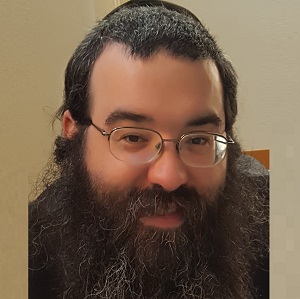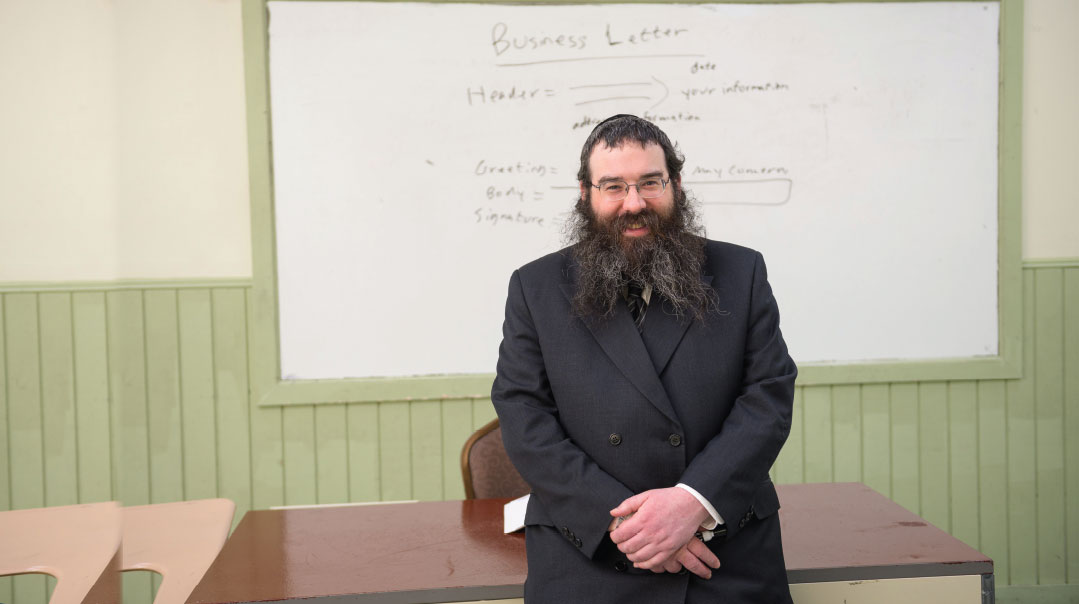Teaching Moments

When I was finally coaxed back into the classroom, it was for something I’d never imagined

I'd always had an aversion to teaching. But when I was finally coaxed back into the classroom, it was for something I’d never imagined — as an instructor for an outsourced secular studies curriculum tailor-made to give yeshivah bochurim a jumpstart on the practical aspects of adult life
After a lifetime of renouncing the noblest of professions as unworkable and not in my genes, I finally, tentatively, made my foray into the classroom from the other side of the desk. Twice a week, I now walk up to a fancy brick building on Boro Park’s edge and try to coax a classroom full of rambunctious teenagers into a love for the written word and the joys of debating whether or not to use the Oxford comma.
Teaching, I should clarify, actually is in my genes. My father has been a second grade rebbi for the past 45 years. My brother is a veteran rebbi. My grandfather taught for many years. Each time I dipped my toe in those waters, however, it just solidified in my mind that classrooms were better left to those who enjoyed them. Where others saw devotion and life-changing tutelage, I just saw incessant disciplining and serving as a landing pad for paper airplanes.
Somehow, irresolute that I am, I allowed myself to be convinced by Rabbi Eliyahu Efroymson, a Clevelander with a vision. When he called me in September and asked if we could meet, I was thrown off by his calm, dare I say “out-of-townish” composure. I figured he had an organization he was sure filled a void in a way few others did and wanted me to write an article. So I agreed to meet.
Rabbi Efroymson had started a nonprofit that can best be described as an overhaul of the current secular education system in yeshivos. His organization, LifePrep Education System, aims to make secular studies interesting to students by making it relevant to them. Why limit math to algebra and geometry, for example, when you can coach the boys in how to handle credit cards, checking accounts, and home mortgages? Why teach only about planets, orbits, and meteors, as fascinating as some students find it, when you could bring down a kitchen sink and show the boys how to fix a leak? And why not make teaching about the earth and the sun hands-on, by building a planetarium in schools? Why, Rabbi Efroymson wondered, shouldn’t boys come out of yeshivah knowing how to assess neighborhood home value as well as they know the laws of chazakah?
Yeshivos can contract with LifePrep to essentially outsource a full-service secular studies department. LifePrep hires the teachers and designs the curriculum, taking the burden off the individual schools.
So where do I come in? As part of LifePrep’s goal of bringing abstract knowledge into the practical sphere, to make learning come alive, Rabbi Efroymson sought to bring in teachers who are recognized in their respective fields. So there are financial advisers and accountants teaching financial literacy and budgeting. Paramedics teach health and the human body. And as he wanted professional writers to teach English, he went around recruiting talent from the Jewish media world. “What will it take to get you?” I recall him asking. (One day I had to erase a board written by the previous teacher, a writer for Ami magazine. The boys appreciated the irony.)
I was hooked when Rabbi Efroymson described the program. Afternoon classes have long been the Achilles heel of any school, even more so in yeshivos where the morning and early afternoon are occupied by rigorous Gemara study. While secular studies in many yeshivos outdo those in public schools and are, to borrow a familiar phrase, more than substantially equivalent to whatever course load the constitutional mandate throws at them, LifePrep seeks to go the next level and make it practical for today’s students.
“Instead of teaching biology,” Rabbi Efroymson explained, “we have a health course called ‘Your Body, Health, and Life.’ It’s extremely practical. The classes are all self-contained and teach about your mouth, your nose, your eyes. We learn about what can go wrong, which medications you should take when something goes wrong. What happens when you get allergies. When we teach about the lungs we have a few classes on smoking and vaping. This is very powerful.”
Classes in civics and government become teachable moments, as students learn the practical differences between a town and a city. How do they raise revenue through taxes? What is money laundering? What happens if someone fraudulently applies for entitlement programs? What do you do when you’re pulled over for speeding while driving?
And, notes Rabbi Efroymson, because the teachers are respected professionals in their fields, they’ll naturally garner the respect of the bochurim, an issue which is always a challenge for menahalim.
Don’t teach dry spelling or grammar, I told myself when I started my classes at a Boro Park mesivta — two classes each of ninth and tenths grades — this past September. Stay focused on the interesting parts of writing and the rest will fall into place.
The only time I flouted my rule was a few weeks ago, when I delved into the literary rewards of using properly constructed adjectives to color sentences. “But, Rabbi Donn, you said you won’t be making us learn grammar,” one boy complained. I briefly contemplated pulling rank on the complainer, the way I remember my teachers doing so many years ago. But I realized that in a way, he was right. I’m supposed to be more a symbol for the allure of writing than the tedium of learning when to use I before E or the difference between “who” and “that.”
I was quite surprised when I realized that I actually enjoyed coming into class. Sometime between my adolescence and 2019, spitballs and paper airplanes must have stopped being a thing. The boys are respectful and eager to learn. Well, most of them. Most of the time. Everyone has a hard day occasionally.
One skill I had to relearn, ironically, is actual writing. More specifically, whiteboard writing. Last time I was in a classroom, writing on the board meant hearing the sound of chalk scratch across a blackboard, only to be wiped off minutes later in a sea of white dust reminiscent of a herd of elephants galloping in the desert. But my handwriting has improved, though I still often wonder why spellcheck isn’t kicking into action.
LifePrep began about four years ago in Telshe-Riverdale, with much of the concept originating with Rosh Yeshivah Rav Avraham Ausband, a grandson of the Telshe Rav, Rav Avraham Yitzchak Bloch Hy”d.
“The goal,” Rabbi Efroymson said, “is to make it as relatable and as interesting as possible to our bochurim. The program was an incredible success the first year. The bochurim were learning, and behavior was almost a nonissue. Two other yeshivos heard about the success and asked if we can run the program there as well. The siyata d’Shmaya was incredible.”
For the current year, there are thirty teachers in eight yeshivos. Rabbi Efroymson said that there is interest from another 15 or so yeshivos for next year.
Rabbi Efroymson says he started the program when he was serving as mashgiach of the Bais Mordechai yeshivah in Teaneck and saw a need for strengthening the secular studies in yeshivos.
“We see ourselves as a service provider, not an actual secular studies program,” he clarifies. “We develop the courses and find the teachers. But ultimately, each yeshivah decided, on its own, which courses to teach and how often to teach them.”
So far, the results appear impressive. Where I teach, the boys just had a two-hour presentation that went through the entire 6,000 years of world history in a comprehensive yet captivating way. One weekly class is devoted to gematria, another to Jewish history.
As I was leaving the building one evening, I noticed one of the teachers lugging a bulging folder. I struck up a conversation with him. He told me that he teaches a self-contained class, in which he goes through an entire subject in 45 minutes. That day, for example, he lectured on the slav, generally translated as quail, the fatty bird that the Yidden ate in the Midbar. He appeared fluent in all the opinions of which modern-day bird fit the bill for the fowl, and had pictures of what quail looks like today and how it might have looked centuries ago.
One friend I’ve made on the job is Rabbi Tzvi Hamel, the most fascinating teacher in the yeshivah if you measure it by the number of bochurim who follow him out every day. He teaches how to be handy around the house, fixing leaks and saving money on a plumber.
I try to give my students hands-on experience with the written word, showing them how to craft an engaging first paragraph, called the lede, in order to grab the reader. I show them how not to squander it on irrelevant information, and how not to surprise the reader deep in the article with the most important details. In other words, I tell the boys, don’t bury the lede.
And, I tell them, the concluding paragraph is your goodbye to your readers. End off with something interesting or attention grabbing so they’ll associate your name with good reads. Build your brand by always sticking to accuracy, keep the language flowing and lively, start by grabbing your reader’s attention and don’t leave go until you finish what you’ve got to say.
In between the lede and the conclusion, build it like you’re a composer finessing a melody. Take advantage of the double comma or adjective to add color and emotion to your piece.
I once heard from Ari Goldman, a former New York Times writer and editor who currently teaches at the Columbia School of Journalism, that Shiras Hayam is the ideal, perfect article. It starts off by answering the five Ws of reporting — who, what, where, when, why — and answers them in rich and poetic language. And why are we even learning all this? I tell my students, “Learning the basics of creative writing should help you write your chiddushim better.” That usually perks them up.
One gratifying moment came after we spent an entire lesson building up a sentence from a drab, “There was a protest at City Hall” into a well-constructed sentence of, “Waving banners and singing patriotic songs, several hundred protesters rallied in front of City Hall on Wednesday against the new ban on plastic bags.”
One bochur came over to me afterward and thanked me. “I now see how the fancy sentences come onto the pages of the newspaper,” he said.
The first question I was asked by the administration was: What is a Stoliner chassid doing teaching English?
The first question I was asked by my students was: Can you get me into Mishpacha?
Well, consider this your debut, boys.
And no, we haven’t settled the debate on the Oxford comma. But then again, neither have the experts.
(Originally featured in Mishpacha, Issue 797)
Oops! We could not locate your form.







